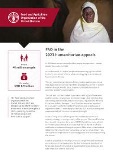Publications

Democratic Republic of the Congo: DIEM – Data in Emergencies Monitoring brief, round 7
05/2024
This Data in Emergencies Monitoring (DIEM-Monitoring) brief shares the results of a seventh-round assessment conducted in January and February 2024 in the Democratic Republic of the Congo.

Identification, Delivery and Empowerment Application (IDEA): An FAO ecosystem of applications to power livelihoods and agricultural assistance in food crisis contexts
04/2024
The Identification, Delivery and Empowerment Application (IDEA) is a digital ecosystem of applications developed by the Food and Agriculture Organization of the United Nations (FAO) to ensure the protection and secure management of beneficiary data, and delivery and tracking of assistance.

Democratic Republic of the Congo: Humanitarian Response Plan 2024
03/2024
The Democratic Republic of the Congo is one of Africa’s largest internal displacement crises, with 22 percent of the population acutely food insecure due to increased armed conflict and the impact of climate hazards.
.tmb-th600x450.jpg?Culture=en&sfvrsn=86e91eeb_2)
The Democratic Republic of the Congo: Impact of conflict on agriculture, food security and livelihoods in Ituri
12/2023
Marked by more than forty years of conflict, the province of Ituri, in the northeast of the Democratic Republic of the Congo, has experienced massive population displacement and recurrent violence.

Promoting lasting resolutions to land conflicts in the Democratic Republic of the Congo
12/2023
A people-centered approach promoted by the Rome-based Agencies Resilience Initiative
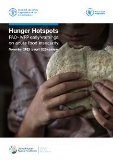
Hunger Hotspots: FAO–WFP early warnings on acute food insecurity
10/2023
FAO–WFP early warnings on acute food insecurity: November 2023 to April 2024 outlook

The Democratic Republic of the Congo: DIEM – Data in Emergencies Monitoring brief, round 6
09/2023
This Data in Emergencies Monitoring (DIEM-Monitoring) brief shares the results of a sixth-round assessment conducted in May and June 2023 in the Democratic Republic of the Congo.
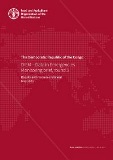
Democratic Republic of the Congo: DIEM – Data in Emergencies Monitoring brief, round 5
05/2023
This Data in Emergencies Monitoring (DIEM-Monitoring) brief shares the results of a fifth-round assessment conducted in February and March 2023 in the Democratic Republic of the Congo.
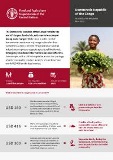
Democratic Republic of the Congo: Humanitarian Response Plan 2023
04/2023
The Democratic Republic of the Congo remains the world’s largest food crisis, with one in four people facing acute hunger.
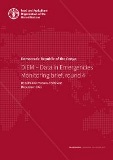
Democratic Republic of the Congo: DIEM – Data in Emergencies Monitoring brief, round 4
01/2023
This Data in Emergencies Monitoring (DIEM-Monitoring) brief shares the results of a fourth-round assessment conducted between September and October 2022 in the Democratic Republic of the Congo.

Enhancing nutrition in emergency and resilience agriculture responses to prevent child wasting: FAO's child wasting prevention action plan (2023–2024)
11/2022
As part of the United Nations Global Action Plan on Child Wasting, FAO requires USD 500 million to implement its action plan to prevent child wasting (2023–2024) in the 15 most-affected countries.
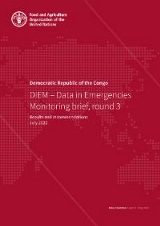
Democratic Republic of the Congo: DIEM – Data in Emergencies Monitoring brief, round 3
09/2022
This Data in Emergencies Monitoring (DIEM-Monitoring) brief shares the results of a third-round field assessment conducted between April and May 2022 in the Democratic Republic of the Congo.
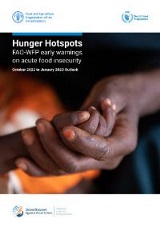
Hunger Hotspots: FAO-WFP early warnings on acute food insecurity (October 2022 to January 2023 Outlook)
09/2022
The Food and Agriculture Organization of the United Nations (FAO) and the World Food Programme (WFP) warn that acute food insecurity is likely to deteriorate further in 19 countries or situations – called hunger hotspots – during the outlook period from October 2022 to January 2023.
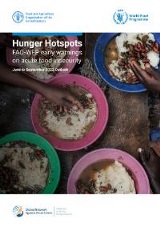
Hunger Hotspots: FAO-WFP early warnings on acute food insecurity: June to September 2022 Outlook
06/2022
The Food and Agriculture Organization of the United Nations (FAO) and the World Food Programme (WFP) warn that acute food insecurity is likely to deteriorate further in 20 countries or situations (including two regional clusters) – called hunger hotspots – during the outlook period from June to September 2022.

2022 Global Report on Food Crises: Joint analysis for better decisions
04/2022
The 2022 Global Report on Food Crises (GRFC 2022) highlights the alarming deterioration of acute food insecurity in 2021
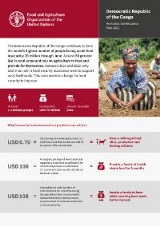
Democratic Republic of the Congo: Humanitarian Response Plan 2022
04/2022
The Democratic Republic of the Congo continues to have the world’s highest number of people facing acute food insecurity: 26 million through June. Around 80 percent live in rural areas and rely on agriculture to feed and provide for themselves.
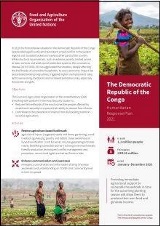
Democratic Republic of the Congo: Humanitarian Response Plan 2021
03/2021
In 2020, the humanitarian situation in the Democratic Republic of the Congo deteriorated significantly amid persistent armed conflict in the eastern regions and increased violence in several other parts of the country.

